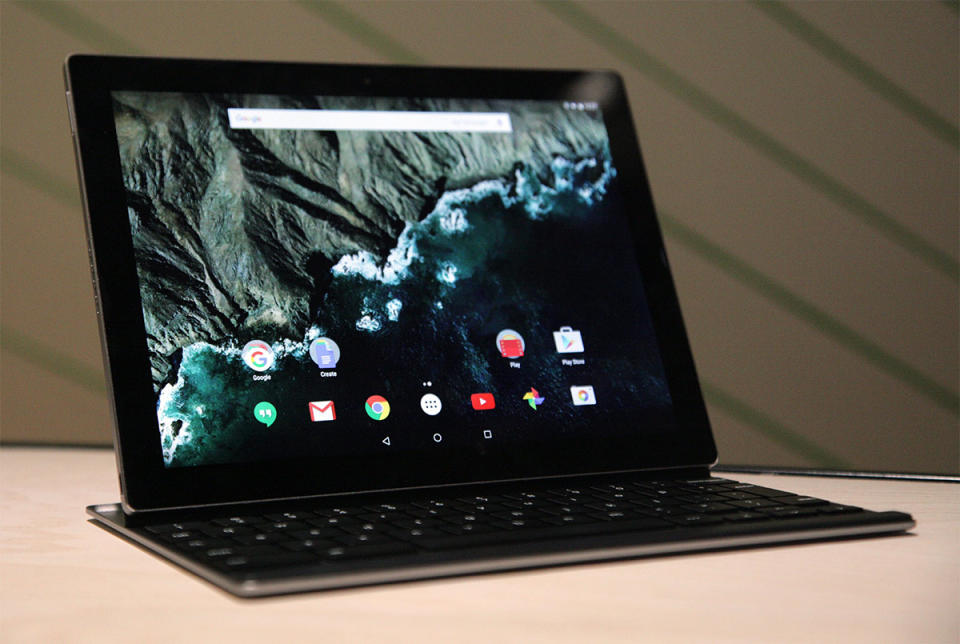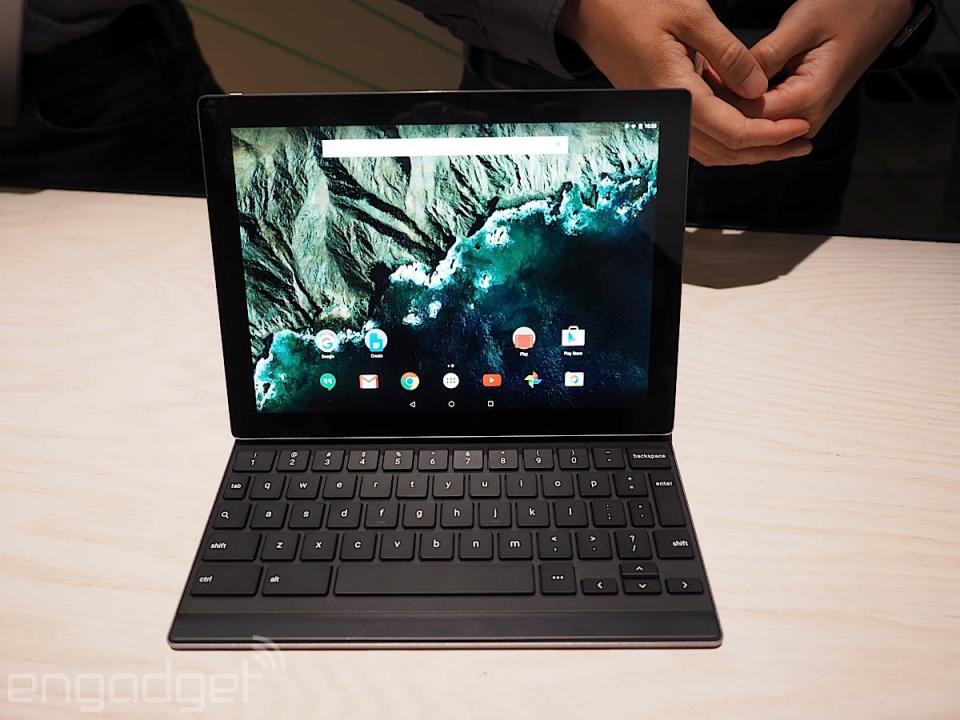Google finally has a Surface competitor in the Pixel C

Say hello to the first-ever Android tablet built by Google. It's the Pixel C, and just like how the Chromebook Pixel was the creme de la creme of Chromebooks, the Pixel C looks to be Google's attempt at making the best-ever 2-in-1 Android tablet it could possibly make. And yes, it appears to be Google's answer to the Microsoft Surface as well. My initial impression? It's gorgeous. Crafted out of anodized aluminum, the Pixel C is superslim, smooth to the touch, light as a feather and is quite simply one of the most elegant tablets -- nay, gadgets period -- that I've ever held in my hands.

Indeed, the Pixel C essentially looks like the little brother to the Chromebook Pixel. Its aluminum shell has that same look and feel and it has a USB Type-C port (which is new to this year's line of Chromebook Pixels) and a gorgeous display. Specifically, it has a 10.2-inch display with a 2,560 x 1,800 resolution (308 ppi), 500 nits of brightness and a reportedly wide coverage of the sRGB color gamut. All of which comes together in a beautiful and stunning-looking screen that really showcases Android's new Marshmallow operating system.
And while that 10.2-inch size might seem a little odd, it was specifically designed that way to mimic the size of standard A4 paper. It's really thin at only 7mm -- I almost felt like it would slip out of my fingers due to how skinny it was (the smooth surface didn't help either). It also feels light for its size -- about a pound according to a Google spokesperson. A nice little addition is a light-up bar that, well, lights up to tell you how much charge the tablet has. Simply tap the tablet's rear twice to see it. On the back is an 8-megapixel camera while a 2-megapixel camera will greet your smiling face on the front. As for the internals, we're told it has an NVIDIA Tegra X1 processor and 3GB of memory.

The C in Pixel C stands for "convertible," and it's called that because of an optional keyboard. The genius here is that instead of attaching via a cumbersome dock, the tablet connects to the keyboard via magnets. There's a special flip-up backstop on the keyboard that automatically self-aligns to the tablet's rear, at which point you can position the tablet as a display. Unlike a lot of other tablet keyboards that have only one or two positions, the keyboard on the Pixel C has variable positions -- from flat all the way to a very steep angle (although not quite 90 degrees).
Held with magnets, the keyboard's hold on the tablet is actually very strong -- I was able to turn the whole thing upside-down and shake it vigorously without it falling off. In order to separate the keyboard and the tablet, I was encouraged to "snap" the two apart like you would a breadstick or a Kit Kat bar; that's how strong the hold was.

The keyboard itself is designated as a "full keyboard" and it certainly feels that way. But in reality it's about 99 percent of a full keyboard because the sides have been chopped off a tad. A spokesperson tells us that a normal keyboard has 19mm pitch, but the Pixel C's add-on comes in at 18.85mm. Using it for a short period, I really liked the travel of the keys. It reminds me a lot of the Chromebook Pixel -- the chiclet keys are separated and tactile enough for me to touch type. I did make a few typographical errors here and there, but it could just be me not being used to the layout. I really like that the keyboard has a nice padded palm rest too, which is not what you can say for a lot of tablet keyboards out there.
And of course, you can simply turn it the other way round to make the whole thing a smooth portable slab. Even with the attachment, the tablet is still nice and lightweight as the keyboard is only about two or so mm thicker. On the whole I'm pretty impressed with what I got to see here. It's obviously top-notch hardware with a beautiful design and I can't wait to see how it performs in the real world. If you want to try it for yourself, you'll have to wait until the holidays to get it. The 32GB version will cost you $499 while the 64GB is $599. And if you want that keyboard, it'll cost you $149 extra.
Get all the news from today's Google event right here.


















